Canterbury Cathedral: Power, Pomp and One Amazing Tudor Party!
In late May 1520, the English royal household began to make its way from Greenwich toward the Pale of Calais to enjoy what would become one of the most lavish and celebrated parties of the Tudor age: The Field of Cloth of Gold. This would be the celebrated meeting between King Henry VIII of England and his French counterpart and rival, King Francois I of France. But before all that drama could unfold, there was a last-minute meeting held at Canterbury Cathedral and its adjacent Archbishop’s Palace.
Charles V, the Holy Roman Emperor at the time, wanted to gently remind Henry of England of the power of the Hapsburg Empire before the English king had a chance to meet with his French rival. As ever, when it came to the three dominant Princes of Europe, there was a fair degree of one-up-manship on display. The outcome? One enormous, glittering party that dazzles even at a distance of 500 years!
Tudor Power, Pomp & Pageantry
While researching the entree to the Field of Cloth of Gold for my 2020 virtual summit Field of Cloth of Gold: 500, I came across an eyewitness account of the pre-meeting between the King of England and the Holy Roman Emperor, Charles V. It was a generous and lavish description of this unique event in which Henry VIII played host to Charles V at Canterbury Cathedral. It struck me as being notable – and unforgettable – for several reasons.
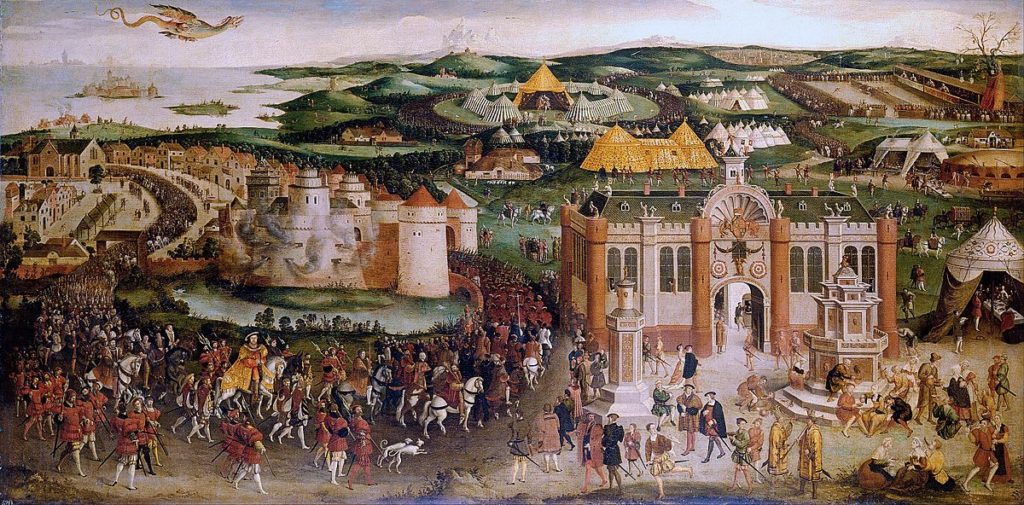
Firstly, the clothes and jewels worn by pre-eminent members of the English and Hapsburg courts are eye-watering in their extravagance. The wealth on display during those few days in May must have been quite a spectacle for the casual onlooker. Secondly, the Field of Cloth of Gold was not just a meeting between two kings. It would be an outrageous display of power and status – as the name suggests. This was to be a once-in-a-lifetime event and the senior members of both royal households, French and English, would be present in force. This meant that travelling to the event alongside Henry VIII was not only his wife, Katherine of Aragon, but his younger sister and widowed Queen of France, Mary Tudor. On the Hapsburg side, Charles V was accompanied by the widowed Queen, Germaine de Foix. That’s five monarchs all in the same place at one time!
Then there was the touching reunion between Katherine and her nephew, Charles. For a brief couple of days, Katherine would be reunited with her beloved kinsman at Canterbury Cathedral in a touching scene that is intimately depicted in the eye-witness account.
Finally, if our cup did not runneth over enough, Ambassador Surian, whose account this is, pulls back the veil of time to an event less ordinary, affording us a glimpse of the riotous joy and extent of the parting associated with the Renaissance court. So, it is time to put your glad rags on and get ready to make merry through the night – your invitation to Canterbury Cathedral awaits you…
On the Road to Canterbury
According to our chronicler, Antonio Surian, the royal party left Greenwich Palace, to the east of the City of London, on 21 May 1520. He describes, how, on ‘Monday the 21st of May, the King and Queen of England, and the royal retinue quitted London’.
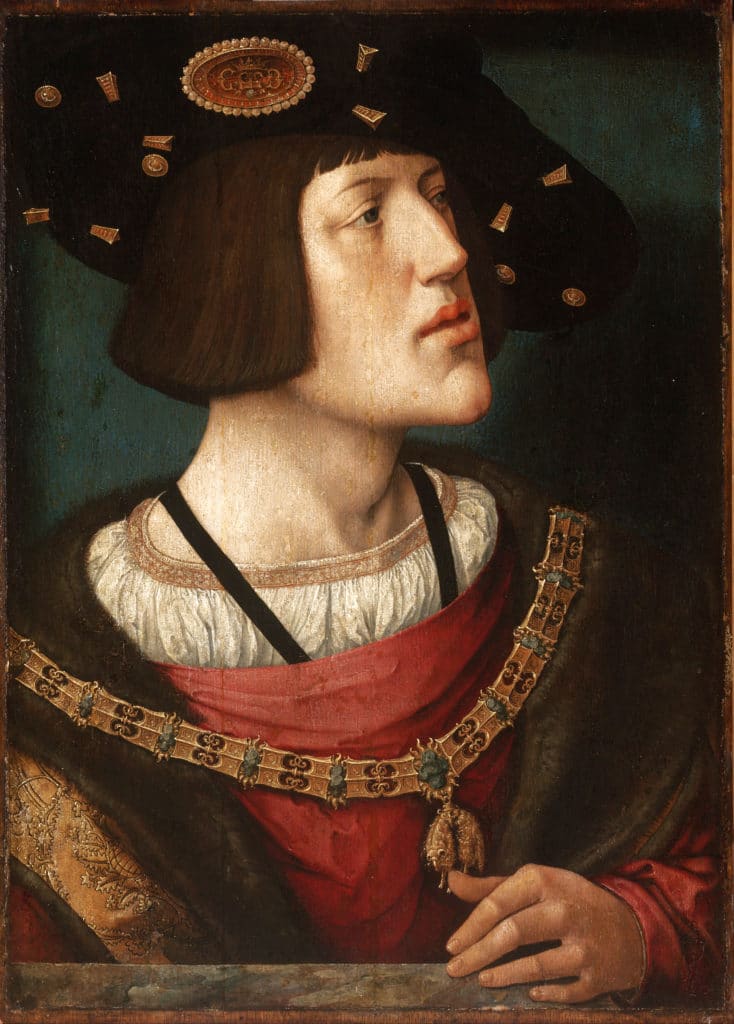
Nervous about the magnificent rendez-vous (and peace treaty) planned between his rivals in the Pale of Calais, Charles V was no doubt desperate to remind his Uncle Henry of his significance as a political player in Europe and the might of the Hapsburg Empire. In fact, Charles nearly didn’t make it to England in time. Luckily for him, a fortuitous change in the weather allowed the Emperor to finally leave the Spanish port, where he had been holed up for weeks. Fate allowed Charles to make the most of a very brief window of opportunity to reach England before Henry departed from Dover.
Having arrived off the English coast, near Dover, on 26 May, Wosley rode out in a boat to greet Charles making a splendid Latin oration before conducting the Emperor to Dover Castle. Both kings were united in the Emperor’s bedchamber, ’embracing each other familiarly with great indications of good will’. Yet, Dover was not their destination. The pair left the castle the next day, (27 May) riding towards the glorious, medieval city of Canterbury, where Katherine of Aragon awaited the return of her husband. Two days of feasting, celebration and diplomacy lay ahead.
When any royal party approached a large town or city there was inevitably considerable pomp and ceremony associated with their reception – and we see no difference here. Once again Antonio Surian describes how he and the French Ambassador, Olivier de la Vernarde, seigneur de la Bastie met the royal party four miles outside the city. They made their obeisance and kissed the Emperor’s hand. The party then fell into a procession and with Charles always taking the place of honour on the right-hand side of the English king, they rode to the gates of the Canterbury.
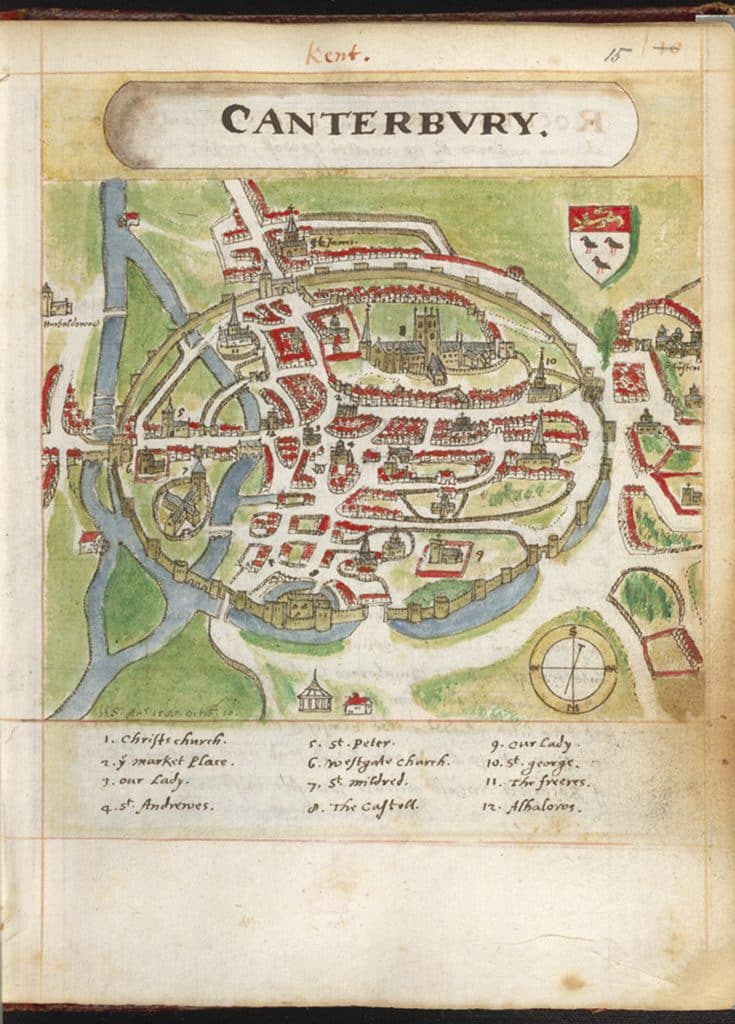
Canterbury was a walled town with gates to the north, south, east and west. Surian does not state which gate they entered through but that ‘Outside the gates of Canterbury were 60 dappled palfreys, saddled with women’s pillions, but empty; the pillions were all of cloth of gold, one of them being embroidered with fine pearls and jewels.’ He goes on to explain that these palfreys had been prepared for Queen Germaine de Foix, who was the widow of King Ferdinand II of Spain. She was Charles’ step-grandmother but the pair seemed to have gotten on very well. So well, in fact, that it was rumoured that the child she gave birth to in 1518 (after being widowed) was Charles’! She fell pregnant shortly after she met Charles when he was 17 and she was 29…
The ceremony continued once inside the gates of the town, where ‘they found all the clergy with crosses awaiting them on one side, and on the other was the mayor and the whole corporation in scarlet gowns, with hoods half black and half red, according to the custom of the country. Henry and Charles then processed through the main streets of Canterbury to reach its spiritual centre: Canterbury Cathedral.
They would have passed under the main Christ Church Gateway, which still stands. Incidentally, this gateway was commissioned to celebrate the marriage of Arthur Tudor to Katherine of Aragon in 1502. It was not completed until 1517, only 3 years before the events in question here took place.
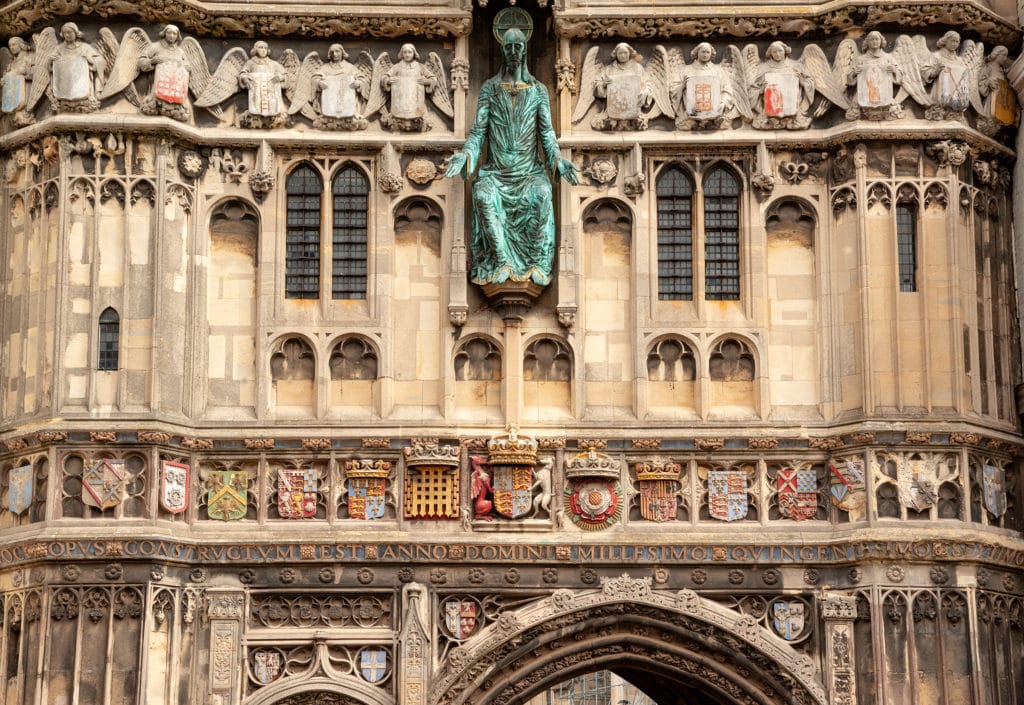
At this point, I will turn again to Anotonio Surian as his account cannot be surpassed: He states that:
.’..on reaching the square in front of the cathedral everybody dismounted and entered the church processionally. The French ambassador Olivier de la Vernarde seigneur De la Bastie was accompanied by the Duke of Buckingham, and the Venetian ambassador by the Duke of Suffolk, the Papal Nuncio pairing with the Bishop of Durham. Having entered by the principal door, the Sovereigns walked over a carpet of purple velvet to a kneeling desk for two persons, in the English fashion, covered with gold brocade and furnished with two cushions to correspond. There they knelt, the Emperor on the right hand, the King on the left; and the Archbishop of Canterbury, standing before them in his episcopal robes and mitred, presented the cross for them to kiss, commencing with the Emperor, and then saluting them with the censer and incense; finally, he sprinkled them with holy water, always commencing with the Emperor. Their Majesties then rose and were conducted under a canopy of cloth of gold to the high altar, where, in like manner, a kneeling desk had been prepared with cushions of cloth of gold, and the ledge covered with crimson velvet. There they again knelt, and the Archbishop presented them with the wood of the holy cross to kiss, and then commenced the hymn, “Veni Creator Spiritus” which was suited both to the day, Whit Sunday and also to the conference between the two Sovereigns, united by spiritual love and goodwill for the benefit of Christendom.’
Afterwards, Henry and Charles went back through the church, towards the west end and headed towards the adjacent Archbishop’s Palace. At its zenith, this was probably the grandest house in Canterbury.
The Archbishop’s Palace, Canterbury Cathedral
Sadly, the medieval palace used by Henry for these celebratory events has been lost; only fragments remain worked into the fabric of a later building. It is clear that there was a passageway that connected the church with the palace for the archbishop’s private use. However, there also seems to have been a main ceremonial entrance, which is described as having a porch. Surian is possibly referring to this entrance when he goes on to say:
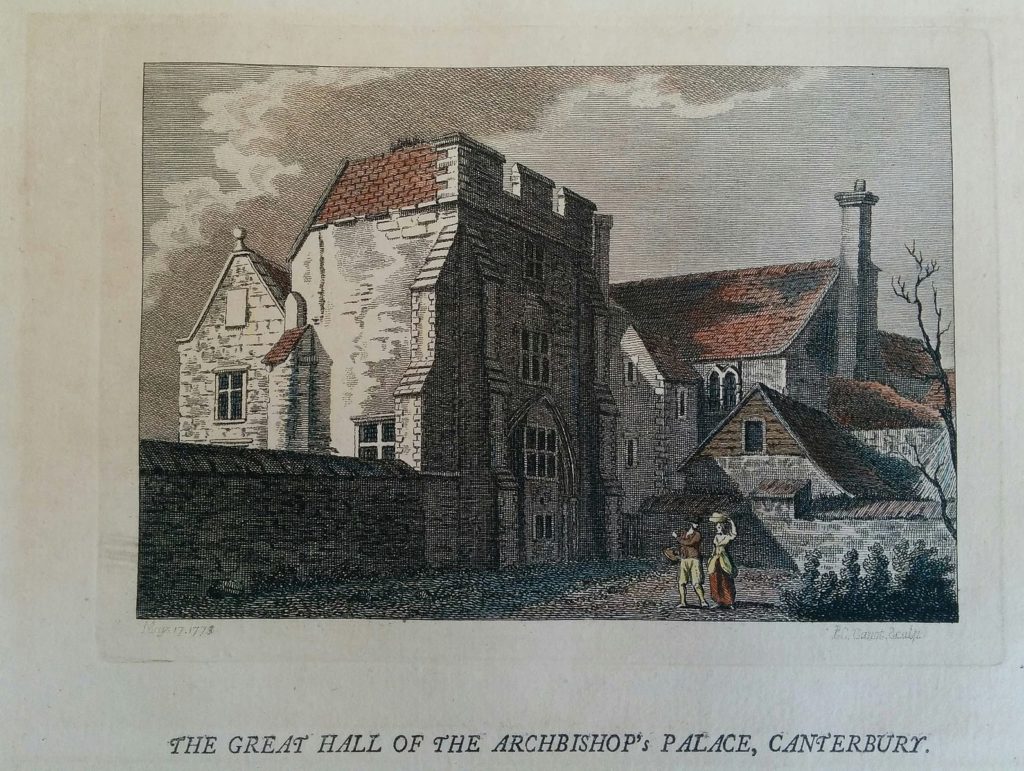
‘Below, at the door of the first porch, which forms the entry into the palace, they met 25 of the handsomest and best-apparelled ladies of the Court. Then, on entering another large corridor, they found some 20 of the Queen’s pages in gold brocade and crimson satin, in chequers. They next ascended 15 steps of a marble staircase, and there on the landing was the Queen of England, the Emperor’s aunt, dressed in cloth of gold lined with ermine, and beautiful strings of pearls around her neck. She embraced her nephew tenderly, not without tears; and they then proceeded upstairs with the ambassadors and the ladies, into a chamber where breakfast had been prepared; whereupon the attendants were dismissed until the hour for mass.’
There are no floor plans of the palace that I have been able to find but we do know that there was a chamber block and a gallery connecting the chamber block with a great hall, which was particularly notable. We will come back to this in a moment. however, we do know from our eye-witness account that the palace was ‘hung with very costly tapestries and cloths of gold’.
At ‘the hour for Mass’, Henry and Charles went back to the cathedral, preceded by the ambassadors and by upwards of 600 lords and knights. The descriptions of the clothes worn by both kings and their queens are sumptuous. Surian does not disappoint. He describes:
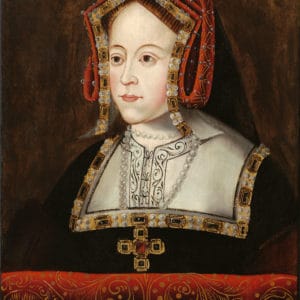
‘The simar of the King of England was entirely of cloth of gold, lined with very beautiful lynx’s fur, and round his neck he wore a very valuable jewelled collar. Both their Majesties wore cloth caps with a brim, and two very superb jewelled ornaments.’ and for Katherine…’The Queen’s petticoat was of silver lama, and the gown of cloth of gold lined with violet velvet, with raised pile, on which the roses of England were wrought in gold. She wore a necklace of very large pearls, from which hung a very valuable diamond cross. Her head gear was of black velvet striped with gold lama, and powdered with jewels and pearls.’
The service was taken by Archbishop Warham and Wolsey gave the benediction. Henry and Charles then returned to the Archbishop’s Palace. Accompanied by Katherine and the ‘very beautiful’ Lady Mary (the king’s sister), they dined alone.
That evening the dancing began! This is where I need to return to the Great Hall, which was massive. In fact, at the time, it was second only in size to the Great Hall at the Palace of Westminster, now known as Westminster Hall. It was certainly larger than Henry III’s great hall at Winchester.
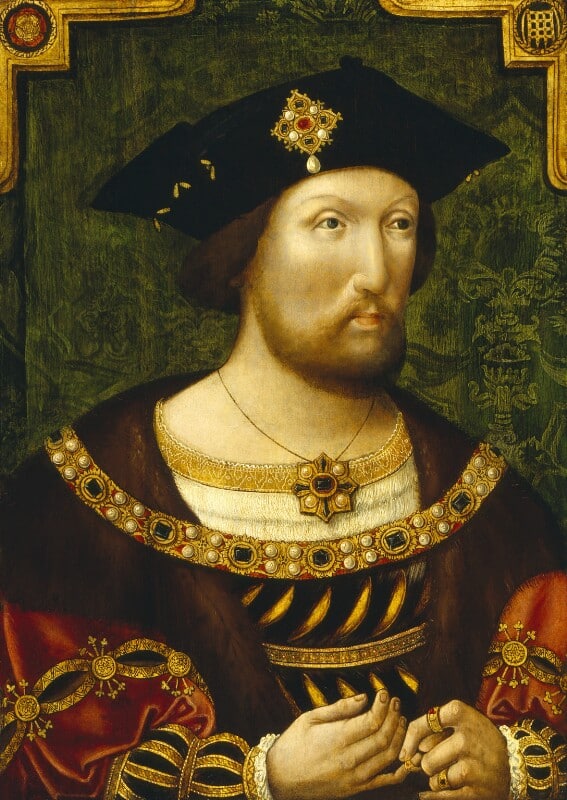
According to the architectural historian, Anthony Emery, the hall was 165 feet by 21 feet internally, aisled and divided into eight bays, each filled with two double-transomed windows. Part of one of these windows, and most of the porch, was incorporated into nearby Walpole House in the eighteenth century. The aisles of the hall were divided by pillars of clustered shafts of Purbeck marble.
The size of the space is attested to by Surian’s account of the royal stay at Canterbury. On this first evening, the Sunday night, we hear that Queen Germaine and 60 ladies entered what must have been the great hall. They were mounted on those white palfreys that we heard about earlier in this account. Each horse wore a saddle upon its back that was decorated with cloth of gold. Germaine was met by ‘the Lady Mary’, late Queen of France and ‘accompanied also by 200 Spanish ladies dressed according to their own fashion’. Quite a sight!
The celebrations continued on Whit Monday, the following day. I’ll be completing the account of the largess on display and the riotous feasting that accompanied the final evening in next week’s post. Click here to read that blog…
In the meantime, if you want to hear me talk about this meeting on video with my co-author of In the Footsteps of Anne Boleyn, Natalie Grueninger, you can do so via my YouTube channel membership. All the videos from the Field of Cloth of Gold: 500 summit, including this one, plus all my other virtual summit videos are available to Connoisseur Members. If you want to find out more about channel membership or to become a member of my YouTube channel, click this link.
Sources
For Antonio Surian’s account see the Calendar of State Papers Relating To English Affairs in the Archives of Venice, Volume 3, 1520-1526.

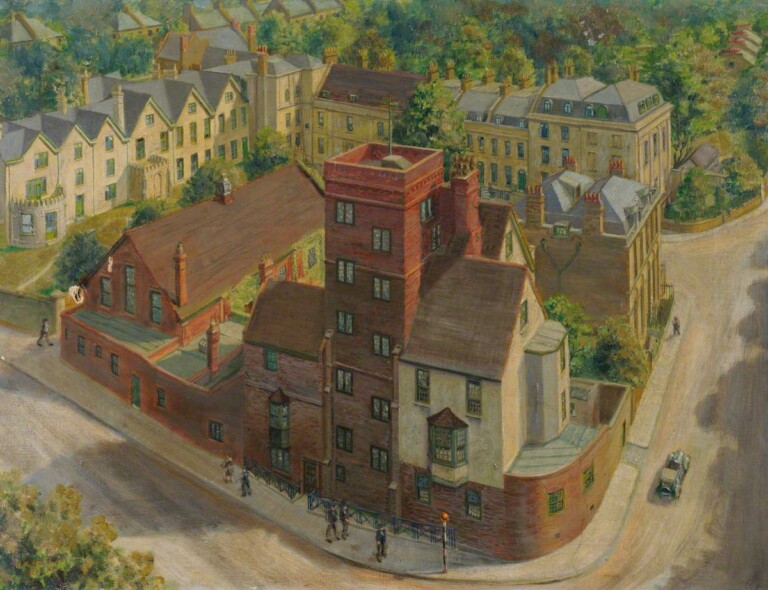
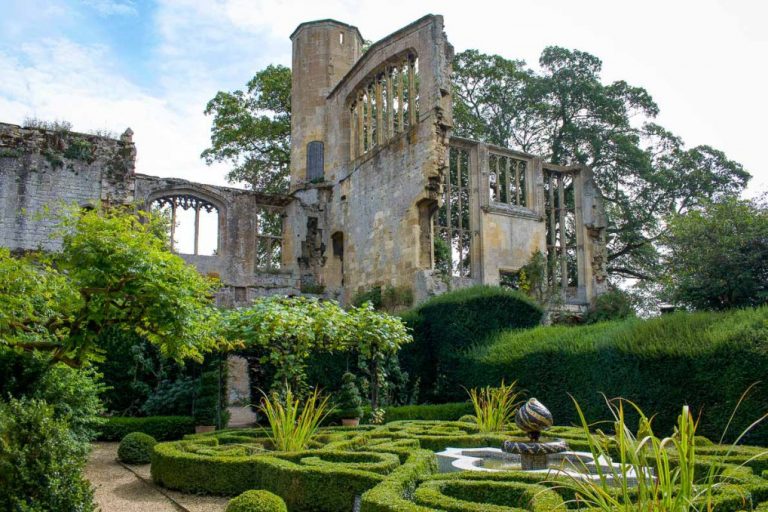
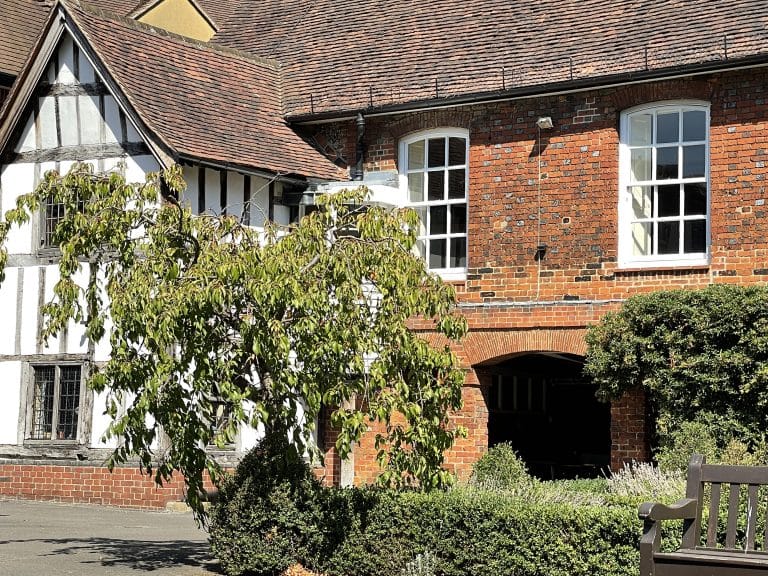
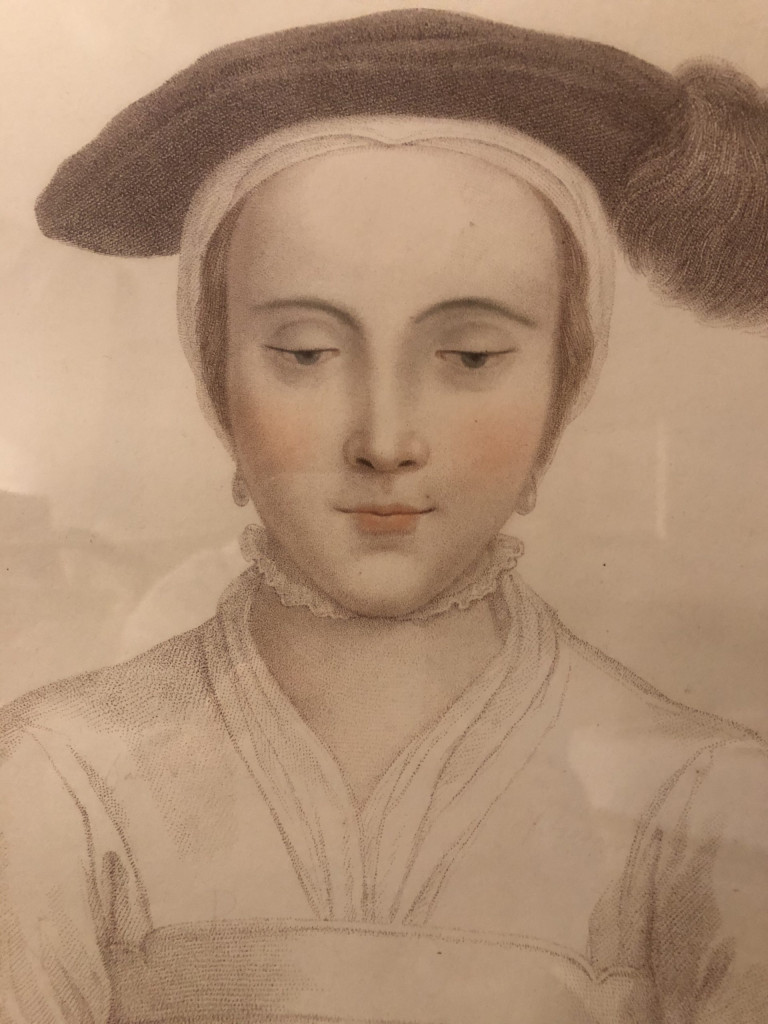
Fascinating details here! I wonder whether Charles got any concessions at all from Henry during this visit? Relations between Spain and England appear to have deteriorated from here…